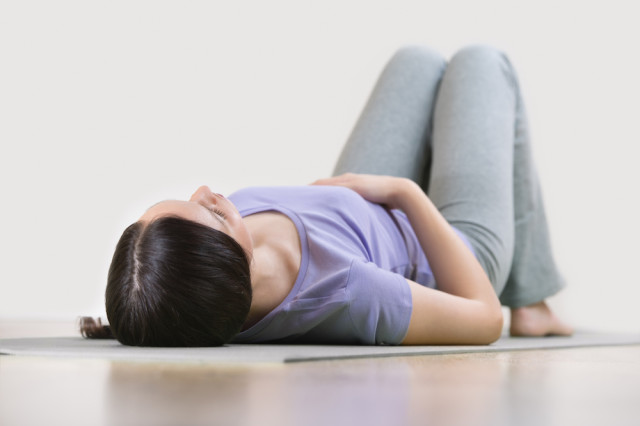Shake Off Chronic Stress With This Simple Self-Care Technique

Image: Shutterstock
Despite the “where young people retire” trope, Portlanders aren’t immune to the stresses of modern life, from financial struggles and workplace woes to strained relationships and even unresolved trauma. We know that chronic stress leads to a crowd of health issues, including elevated blood glucose, hypertension, digestion difficulties, and decreased immune function—and worrying about all that only makes us more stressed.
Worse still, as certified TRE provider Jessica Schaffer explains, “Ongoing stress makes one less resilient to life and more prone to overwhelm, thus perpetuating an ongoing cycle of imbalance and of suffering physically, mentally and emotionally.” In other words, when we’re stressed out, everything feels harder and more stressful.
How do we escape this vicious cycle? It may be as easy as following Taylor Swift’s sage advice to “shake it off.” And this isn’t a metaphor; we’re talking literal shaking here.

TRE tremor position
(Courtesy Jessica Schaffer)
After decades of international aid work throughout Africa and the Middle East, trauma specialist Dr. David Berceli observed that, after a traumatic event, wild animals and human toddlers alike “shake out” stress-induced muscular tension by trembling. Older humans, however, are socialized to suppress the shaking reflex; as a result, that muscular tension is stored in the body for days, months, even decades, resulting in heightened anxiety and physical pain.
To address this, Berceli developed a series of simple stretches and exercises that mimic this reflex by inducing a self-controlled tremor that travels from the legs along the spine, slowly unwinding muscular tension from sacrum to cranium. These “Tension & Trauma Release Exercises” (TRE) are now used by combat veterans, war refugees, overworked parents, and everyone in between.
Could stress relief really be as easy as lying down and trembling for a few minutes? Amazingly, the answer seems to be yes. Psychologists and yoga therapists have reported remarkable and immediate results in clients with depression, anxiety, and PSTD. (Bonus: unlike psychotherapy, TRE doesn’t trigger emotional response or unpleasant memories, allowing the body to process trauma without reliving it.) The general public can benefit, too, as Schaffer explains:
Sometimes people know right away, “Wow, this is helping me because I’m sleeping better and my digestion’s better and I feel less anxious.” For me, it was subtler, but really profound… I realized one day that I felt safe in my body in the world [for the first time]. I can be in the world and feel open and exposed and not like I need to protect myself. I didn’t come from a long history of suffering from anxiety or post-traumatic stress, yet even I had this fundamental shift inside that shifted how I feel in the world.
To start shaking the stress away, sign up for a group class series or private session with a certified TRE provider. Once you’ve mastered the exercises, you’ll be able to add TRE to your personal self-care arsenal. The practice requires no props and typically takes only 30–45 minutes weekly, making it accessible to even the busiest Portlander.
Want to learn from the master? You’re in luck! Dr. Berceli is coming to town on August 12 to present an introductory TRE lecture at the Old Church. Tickets are $10, available online. Learn more about TRE and Berceli at his official site, and get ready to shake, shake, shake!
